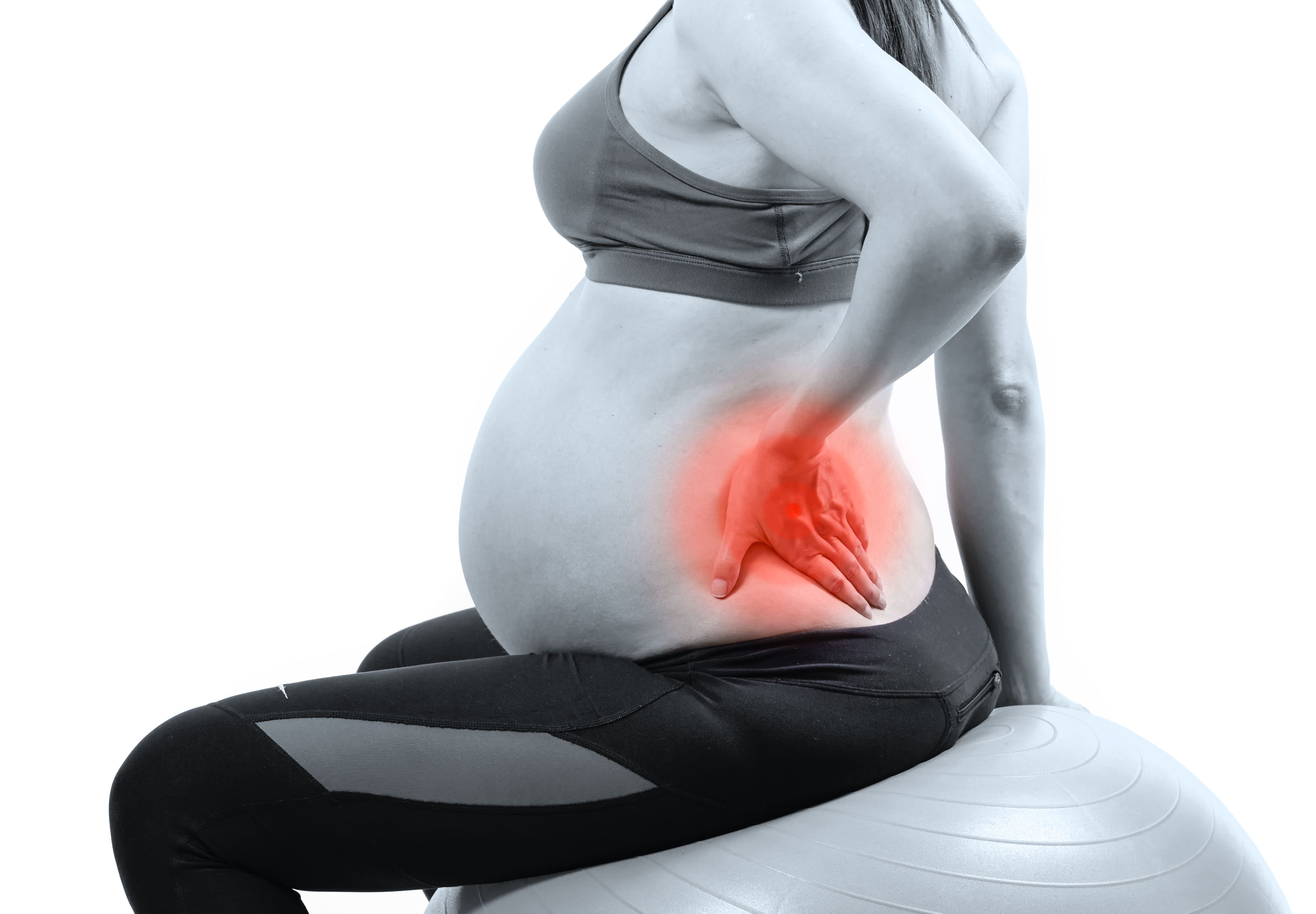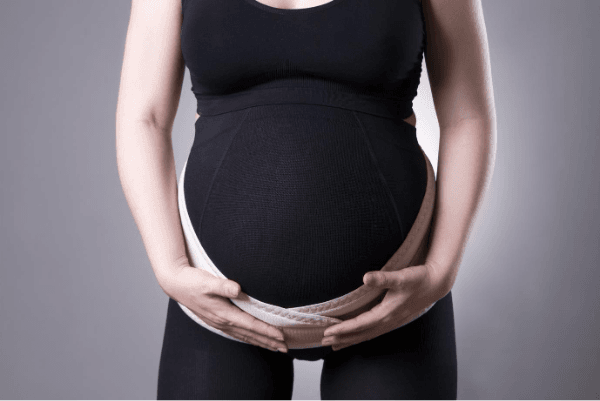Pregnancy and back pain: causes & solutions
It's very common to experience back pain during pregnancy. Like one in two pregnant women, your pregnancy may be accompanied by lower back and pelvic pain(1)(2). The ligaments in your body naturally become more flexible and stretch to prepare you for work. This can put pressure on the joints in your lower back and pelvis, which can lead to back pain.
According to almost half of the women we surveyed (survey conducted among a sample of 2218 respondents on the monmaldedos.fr website between 15/10/2018 and 15/11/2018), these disabling "lumbopelvic" pains can disrupt daily activities and sleep as early as the first trimester. Where does this pain come from? Is it something to worry about? Are there ways of dealing with them, even though they are often regarded as nothing more than "minor pregnancy aches and pains"?

What causes lower back pain during pregnancy?
Back pain during pregnancy generally occurs when the pelvis meets your spine at the sacroiliac joint. There are several possible reasons for this, such as weight gain, changes in posture, hormonal changes, muscle separation and stress.
Two types of back pain during pregnancy
There are two types of pain: true low back pain (which tends to be centred on vertebrae L3, L4 and L5) and posterior pelvic pain, which involves the joints between the sacrum and the pelvis (known as "sacroiliac" joints).
The pelvis, hips, pubis and lower back become much more sensitive during pregnancy. Even if we don't know all the mechanisms at work, several factors have been identified, starting with weight gain, which increases stress on the back and pelvis.
As the stomach becomes rounder, the centre of gravity shifts towards the front of the body. The arch becomes more pronounced and this "hyperlordosis" strains the muscles of the spine. Not to mention that the abdominal muscles become slack and no longer provide the same support for your back. In order to maintain balance, the trunk tilts backwards. But not all women develop hyperlordosis during pregnancy.
The role of hormones in back pain
Of course, hormones also come into play. During pregnancy, your body produces progesterone, oestrogen and relaxin. These substances soften the ligaments, muscles and tendons of the pelvis to facilitate foetal growth and childbirth. The opening of the joint between the pelvic bones, known as the "symphysis pubis", can cause considerable pain.
Lastly, some pain described as lumbar is linked to compression of the large abdominal vessels and others to muscle fatigue(1).
How can I relieve my back pain during pregnancy?
When faced with lumbopelvic pain, doctors suggest relieving pregnant women with paracetamol, a molecule that is not contraindicated during pregnancy, unlike anti-inflammatory drugs, for example. One doctor in 5 prescribes painkillers (survey of a sample of 2,218 respondents on the monmaldedos.fr website between 15/10/2018 and 15/11/2018).

According to a study carried out in 2017(4), a lumbar belt worn 4 days a week and an average of 2.5 hours a day would reduce pain in almost 1 in 2 women. Nearly 2 out of 3 women also say they feel better supported. A lumbar belt can therefore help you maintain your activities, as long as they are adapted to your physical condition.
"To support my pelvis, I wore a lumbar and abdominal elastic belt. This has helped me a lot when walking and in all my daily activities" adds Céline who, like nearly 14% of pregnant women surveyed, has chosen this solution (survey carried out on a sample of 2218 respondents on the monmaldedos.fr website between 15/10/2018 and 15/11/2018)
Physiotherapy with re-education and gymnastics in the swimming pool (if there are no contraindications, from the 6th month of pregnancy), acupuncture, weight management, learning techniques to protect your back, are all approaches that can also help to reduce pain(3). These different approaches can be combined(1).
Some women also benefit from therapies such as relaxation, massage or osteopathy. It's up to you to experiment with the method that suits you best!

On a day-to-day basis, it's important to adopt new reflexes, such as avoiding standing on one leg or sitting for too long. You should avoid twisting or unbalancing your pelvis, such as carrying a child on one hip. The same goes for prolonged walks and carrying heavy loads. Stay active, but don't overdo it, and don't forget to take regular breaks!
There are many small things you can do to help. For example, choose a bra that supports your breasts well. Put your heels away and wear comfortable shoes. And remember to sit down when getting dressed.
Once in bed, your position is also essential to avoid lower back pain. For a good night's sleep, make sure you sleep on your side, with a cushion between your knees and under your stomach.
Don't forget that preventing back pain during pregnancy is also a great opportunity to rediscover the time to do things at your own pace. Don't forget to consult a health professional!
- Batonat M. Petits maux de la grossesse : étude de la lombalgie. Mémoire de diplôme de sage femme. Paris Descartes 2010. https://dumas.ccsd.cnrs.fr/dumas-00558463/document
- Pregnancy-related low back pain. P Katonis,1 A Kampouroglou,1 A Aggelopoulos,1 K Kakavelakis,1 S Lykoudis,1 A Makrigiannakis,2 and K Alpantaki1. Hippokratia. 2011 Jul-Sep; 15(3): 205–210.
- Les traitements pour la prévention et le traitement des lombalgies et des douleurs pelviennes pendant la grossesse. Cochrane revue. https://www.cochrane.org/fr/CD001139/les-traitements-pour-la-prevention-et-le-traitement-des-lombalgies-et-des-douleurs-pelviennes
- Bertuit J : Pregnancy and Plevic Gridle Pain : Analysis of pelvic belt on pain. doi: 10.1111/jocn.13888, 2017. https://www.ncbi.nlm.nih.gov/pubmed/28544276


